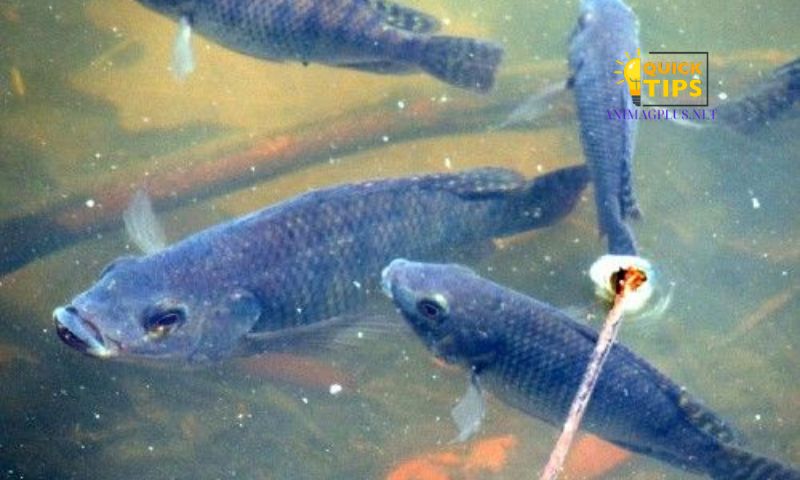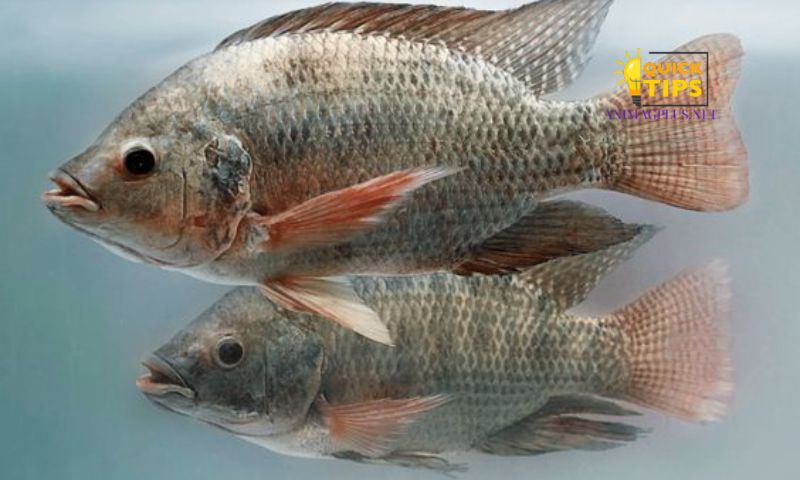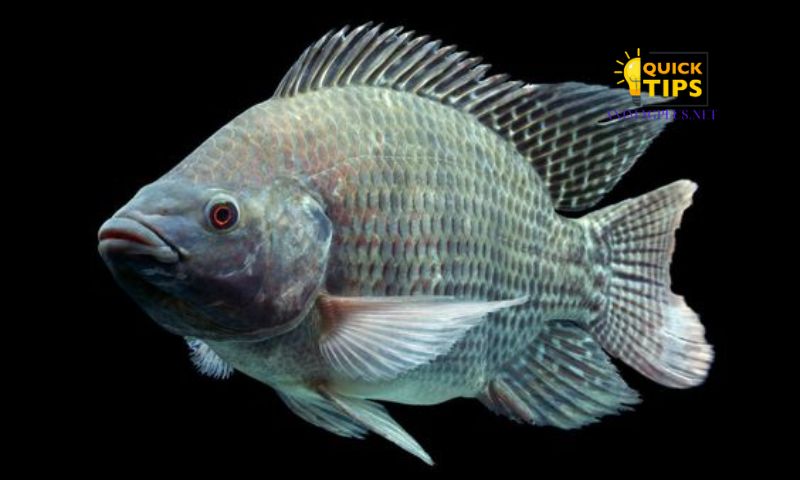Fishing for tilapia can be a rewarding experience, whether you’re a seasoned angler or a beginner. Known for their mild flavor and ease of catching, tilapia are a popular target for freshwater fishermen. This guide from Animagplus.net will provide you with detailed tips for fishing tilapia, ensuring that you have all the information you need to succeed.
Understanding Tilapia

Tilapia are a diverse group of fish native to Africa but have been introduced to many parts of the world due to their adaptability and usefulness in aquaculture. They thrive in freshwater lakes, ponds, rivers, and man-made reservoirs. Understanding their behavior and habitat is crucial for a successful fishing trip.
Tilapia are omnivorous, feeding on a variety of plant and animal matter. They are most active during warmer months and tend to feed more aggressively in the early morning and late afternoon. Recognizing these patterns can significantly increase your chances of catching tilapia.
Essential Gear for Tilapia Fishing
Having the right gear is essential when it comes to fishing tilapia. Here’s what you’ll need:
- Fishing Rod and Reel: A medium-light to medium-action rod paired with a spinning reel is ideal for tilapia fishing. This setup provides the right balance of sensitivity and strength.
- Fishing Line: A monofilament line with a test strength of 6-10 pounds is generally sufficient. Tilapia are not particularly strong fighters, so heavy lines are unnecessary.
- Hooks and Bait: Small hooks (size 6 to 10) work best. As for bait, tilapia are not very picky. They will bite on worms, insects, small fish, and even dough balls. Artificial baits such as jigs and soft plastics can also be effective.
Best Locations for Tilapia Fishing

Finding the right location is one of the most important tips for fishing tilapia. These fish prefer warm, shallow waters with plenty of vegetation. Here are some ideal spots to consider:
- Freshwater Lakes and Ponds: These are prime locations for tilapia, especially if they have areas with dense vegetation.
- Rivers and Streams: Look for slow-moving sections with muddy bottoms.
- Man-Made Reservoirs: These often have structures like docks and piers where tilapia like to gather.
Within these locations, focus on areas with submerged vegetation, overhanging trees, or underwater structures, as these provide shelter and food for tilapia.
Effective Fishing Techniques for Tilapia
To increase your catch rate, use the following techniques:
- Bait Fishing: Using natural bait is one of the most effective methods. Simply cast your line near vegetation or structures and wait for a bite.
- Artificial Lures: Small jigs, spinners, and soft plastic lures can be very effective, especially if you mimic the movement of small prey.
- Fly Fishing: For those who enjoy fly fishing, tilapia can be a fun target. Use small, lightweight flies that resemble insects or small fish.
When you feel a bite, allow the tilapia a moment to take the bait fully before setting the hook. This increases the chances of a secure hookset.
Choosing the Right Bait
Selecting the right bait is crucial and is one of the top tips for fishing tilapia. Here are some options:
- Natural Baits: Worms, insects, and small fish are all excellent choices. Tilapia are particularly fond of worms and small crustaceans.
- Artificial Baits: Small lures, jigs, and soft plastics can also work well. Choose lures that mimic the natural prey of tilapia.
- Homemade Baits: Dough balls made from bread or cornmeal can be surprisingly effective. Adding a bit of flavoring, such as garlic or vanilla, can make them even more appealing.
Experiment with different baits to see what works best in your chosen location.
Understanding Tilapia Feeding Habits
Tilapia have specific feeding habits that you can use to your advantage:
- Daily Patterns: Tilapia are most active during the early morning and late afternoon. Plan your fishing trips during these times for the best results.
- Seasonal Changes: Tilapia feed more aggressively in warmer months. In colder weather, they tend to be less active and might move to deeper waters.
- Best Times of Day: Focus your efforts on early morning and late afternoon when tilapia are actively searching for food.
By aligning your fishing times with their feeding habits, you can significantly improve your catch rate.
Weather and Environmental Factors
The weather and environment play a significant role in tilapia fishing. Here’s what to consider:
- Weather Conditions: Tilapia are more active in warm, stable weather. Avoid fishing during extreme weather conditions, as tilapia may become inactive.
- Water Temperature and Clarity: Warm, clear waters are ideal. However, slightly murky water can also be beneficial as it provides some cover for tilapia, making them feel more secure.
- Environmental Conditions: Factors such as water level, vegetation density, and availability of food sources also impact tilapia behavior. Adjust your strategies based on these conditions.
Safety and Conservation Tips

Fishing responsibly ensures that tilapia populations remain healthy for future generations. Here are some safety and conservation tips:
- Safe Fishing Practices: Always wear a life jacket when fishing from a boat. Be mindful of your surroundings to avoid accidents.
- Catch and Release: If you’re not planning to keep the fish, practice catch and release. Handle tilapia gently and return them to the water quickly.
- Local Regulations: Adhere to local fishing regulations, including size and bag limits. This helps in maintaining sustainable fish populations.
Common Mistakes to Avoid
Avoiding common mistakes can greatly enhance your fishing experience. Here are a few to watch out for:
- Overlooking Location Scouting: Spend time scouting locations before fishing. Knowing where tilapia are likely to be can save you time and increase your success.
- Using the Wrong Bait or Gear: Ensure that your gear and bait are appropriate for tilapia. Using oversized hooks or heavy lines can reduce your chances of success.
- Ignoring Local Fishing Regulations: Always stay informed about local fishing laws. Violating regulations can lead to fines and harm fish populations.
Additional Resources
To further enhance your tilapia fishing skills, consider exploring additional resources:
- Fishing Guides and Tutorials: Many online platforms and YouTube channels offer valuable insights and tutorials on tilapia fishing.
- Books and Websites: Invest in books that cover freshwater fishing techniques and tilapia behavior. Websites dedicated to fishing can also provide up-to-date information and tips.
- Local Fishing Clubs and Communities: Joining a local fishing club or online community can provide opportunities to learn from experienced anglers and share your experiences.
Conclusion
Fishing for tilapia can be a highly enjoyable and rewarding activity. By understanding their behavior, choosing the right gear, and applying effective techniques, you can significantly improve your chances of success. Remember to fish responsibly, respect local regulations, and continue learning from your experiences and fellow anglers.
Following these tips for fishing tilapia will not only help you catch more fish but also enhance your overall fishing experience. So grab your gear, head out to your favorite fishing spot, and enjoy the thrill of catching tilapia!

